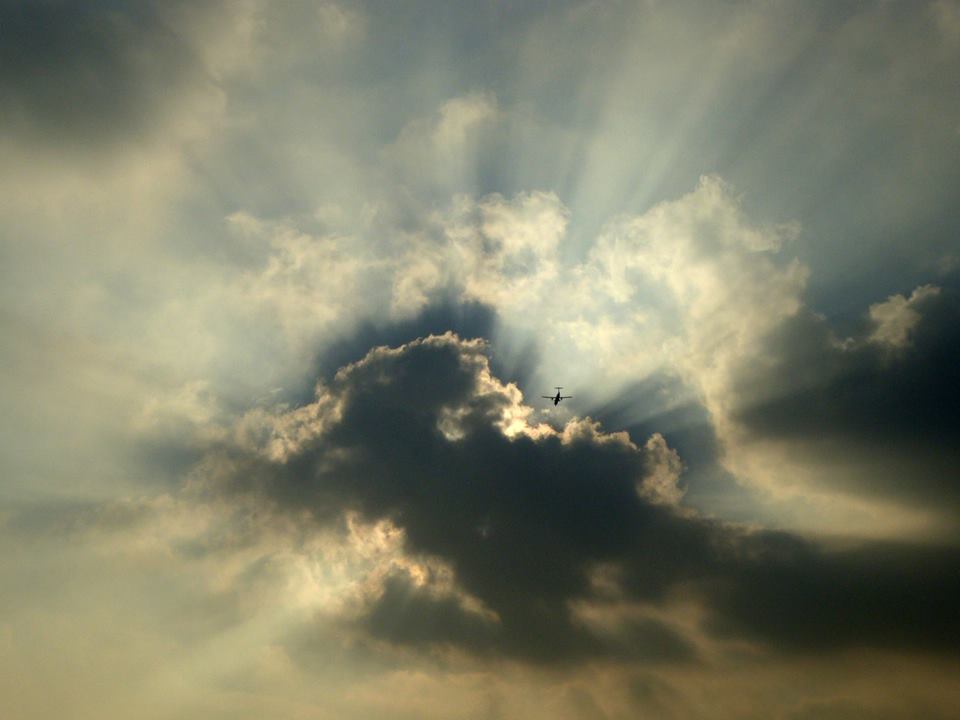A fortnight had passed since our last ride out of London. In between our lovely late summer trip to the Shipwright’s Arms on Faversham Creek, and this weekend, we had stayed in London for a short, easy ride, seeking out the blue plaque reminders of famous folk who had lived in lewisham in past times. Lewisham itself seems to have far fewer of these than neighbouring boroughs so we had wandered over the borough boundary a few times, but Southwark and Lambeth were the furthest we had gone then!
So, a stretch of the legs was definitely in order, and I had chosen more of the south east marshlands to explore. But this time, north of the Thames, in Essex.
A fair number of estuaries slice fairly deeply into the Essex coastline. It shares the Thames with Kent, and this is the most developed. Cycling in this area of Essex doesn’t have a lot to offer. Heavily developed with fast straight roads purpose built for the car with no concessions made to anything without a motor.
However, travel just a few miles further north to the estuaries of the Crouch, or the Blackwater and Essex gets more interesting. Its flat, drained marshland with big vistas, open skies and a real feeling of space. The towns and villages are smaller, pretty with quiet churches and interesting pubs. Yet we are still pretty close to London.
We took the train from Liverpool St to Wickford, a quick journey of 30 minutes or so, then headed up Brock Hill out of the town. Unusually welcome, as this hill warmed us up on what was a very chilly, grey morning. At the top of the hill we turned off towards the Hanningfields, but bypassed the reservoir and headed down quieter lanes, past hedges heavy with the plumpest sloes I’ve seen in years.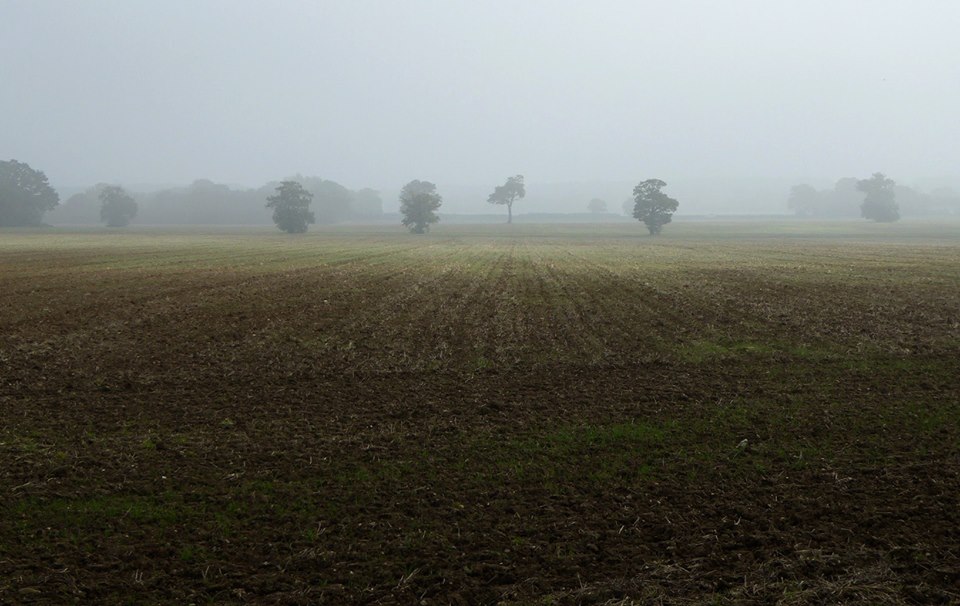
The sun began to break through, gently and slowly, but definitely on its way. We rode through lanes lined with trees, still in full green leaf, just a hint of yellow and orange occasionally reminding us of the season. 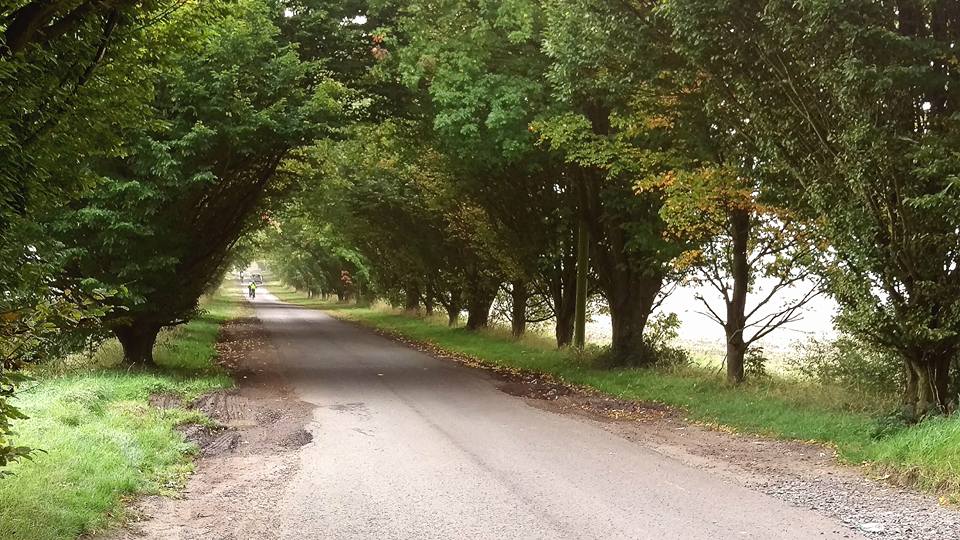
Then we had no choice but to take a busier road for a while. One of the problems of this part of Essex is that its almost impossible to plan a route of more than 50 miles or so without touching on a road like this once or twice. The further north you go the more quiet lanes there are.
But it wasn’t for long. Though Stow Maries, Cold Norton to Latchingdon, the road was straight, fairly busy but slowed somewhat by our large riding party, anyway. Once through Latchingdon, we turned off to take a quieter road.
Our first and only puncture occurred somewhere along one of the country lanes about 3 miles from Bradwell and the bulk of the group carried on up a short climb, unusual round here.
The little climb had delivered us to a quiet crossroads by St Lawrence church, the one real highpoint in the area. We waited here for the flat fixing group to catch up and looked out towards the estuary. From here you can see clearly how the terrain changes. Beside us, more traditional English countryside, farms, woods, hedges. Below, stretching out to the water, flatter, emptier looking, bigger views . The trees become fewer in number, till suddenly you realise there are are hardly any, just one or two dotting the wide marshlands which stretch down to the estuary. The power station, in the distance, still shrouded in the last wisps of the cloud the sun had not yet managed to chase away.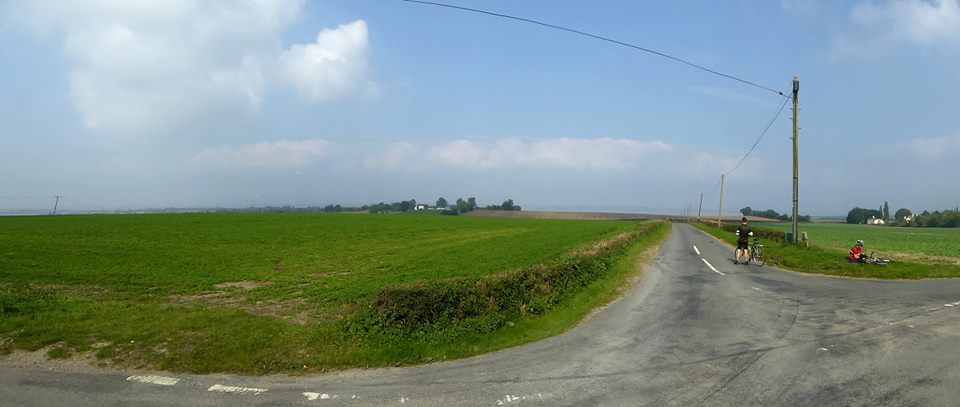
Once the rear of the group had caught us, lunchtime was approaching and we headed down to the Green Man on Burnham Waterside. We all opted to eat in the garden, except for alan who said something about looking for a coffin workshop inside. All became clear later when he explained that the old pub building was originally just that, a place where coffins were made.
Lunch over, we retraced our wheel tracks a little to ride through the village itself and down to the ancient chapel of St Peter on the Wall. It sits right on the very edge of the marshes and was built on the site of an even older Roman fort. Unfortunately, at the moment it’s shrouded in very twentyfirst century scaffolding! So the atmosphere of the place is slightly less ancient and quietly desolate than I remembered.
More retracing of wheels then through the pretty village of Tillingham to the crossroads where a signpost reading simply “The Marshes” sends you off down lanes which take you east again, out towards the water, but never quite there. Now the marshes are drained and farmed, but they still retain an empty eerieness, the views are still open and wide and only a little way off the sails of boats are clearly visible, gliding by.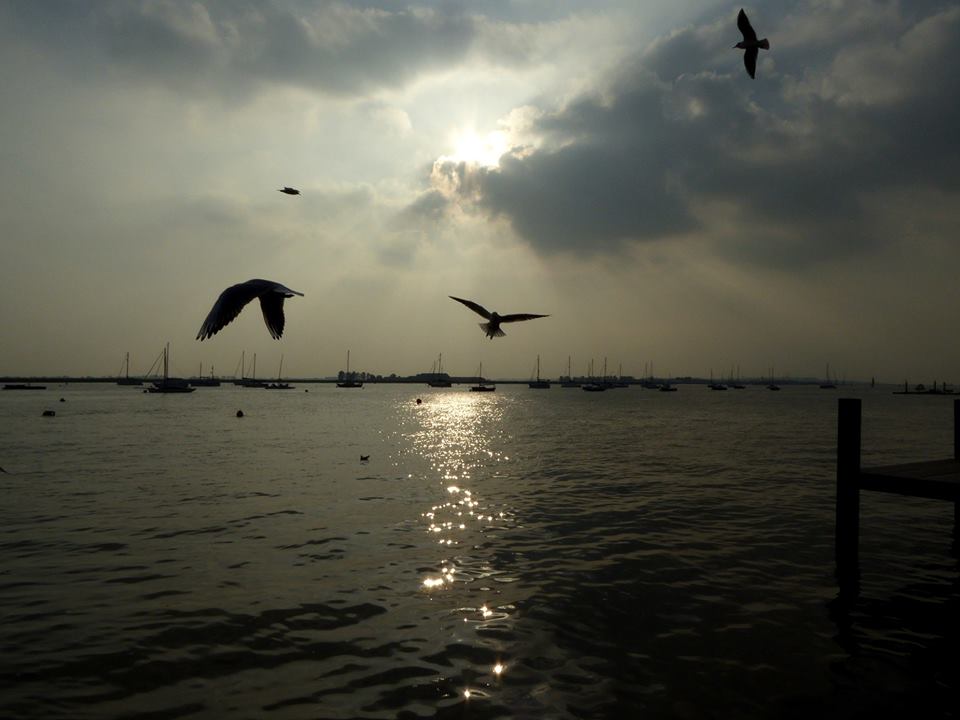
These roads are very quiet, with hardly any motor traffic. Some farm traffic was around, and it was clear that on this fine day, they were busy. It looked like post harvest soil preparation was underway. The working drivers were considerate and pleasant, apart from one notable exception. At one point on a completely empty, quiet and very narrow lane, we became aware of a very loud vehicle approaching. The noise of the engine indicated it was moving at some speed. A few anxious cries of warning from the riders at the back gave us barely enough time to get out of the way of a huge tractor pulling a heavily loaded trailer at some speed. A couple of riders who had been riding on the outside, chatting two abreast, had a very close call indeed. Totally unnecessary. Thankfully, I have never experienced an agricultural machinery driver behave in this way before and hope I never do again.
The rest of the ride passed without incident, apart from us having to lift our bikes over, or push them under a locked farm gate. This was never locked in the part but seems to be due to the rise in theft of farm machinery.
Very suddenly, the trees begin to appear again, and you know that your marshland ride is almost over. Then, an ordinary urban crossroads appears and the spell is broken. No longer does it feel as though you are far from any big settlements, with miles to ride before you hit the nearest town. No, you are back in the busy, over crowded south east of England, and have, in truth, never been more than a few miles from it.
About half the group opted to take the next train from Burnham on Crouch back to Wickford and the London connection. The rest of us opted to spend an hour in the small town and rode down to the harbour area and the older part of the town, where Georgian buildings line the harbour front. We settled with a cupof tea or a beer outside the Anchor pub watching the boats, the paddle surfers, and the sun gradually dropping nearer the horizon.
Then we too headed for the train. The track runs along the estuary for quite a while on its way back to Wickford, and at one point it almost feels as though the water might come right up to the track. Less than half an hour later, we were in Wickford with just a few minutes to spare before the fast train to London.
